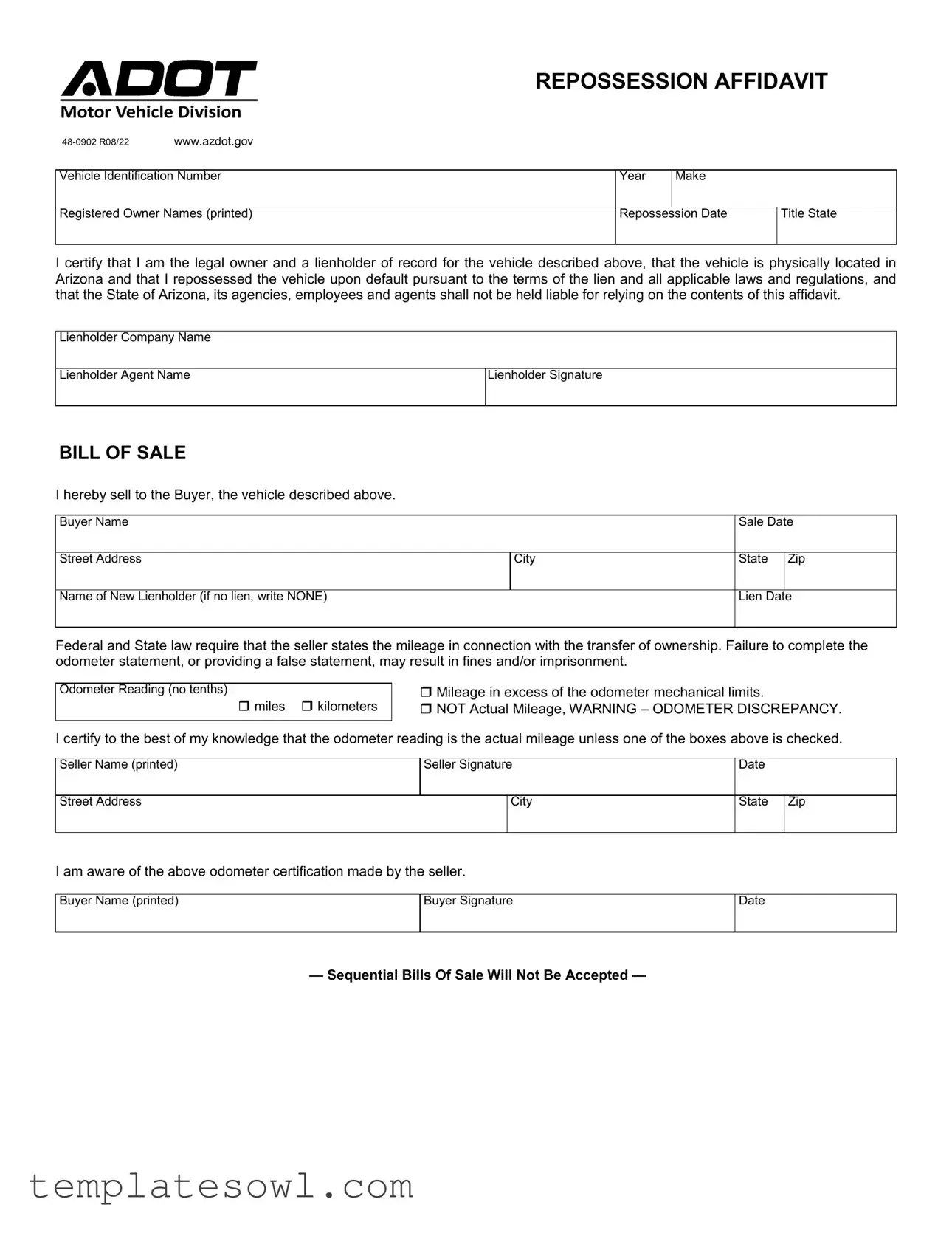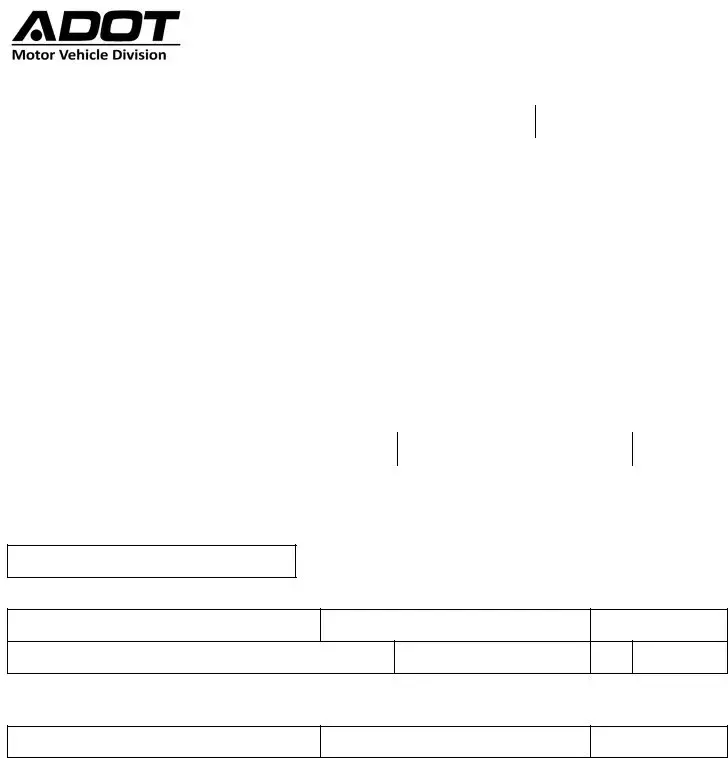What is the purpose of the Arizona Repossession Affidavit form?
The Arizona Repossession Affidavit serves as a legal document that indicates the repossession of a vehicle by a lienholder. It confirms that the vehicle is physically located in Arizona and that the repossession occurred following the terms of the lien agreement and applicable laws. This document protects both the lienholder and the state, ensuring that the liabilities associated with the vehicle are clearly outlined.
Who needs to fill out the Arizona Repossession Affidavit form?
The form must be completed by the legal owner of the vehicle who also holds the lien. This typically includes finance companies or individuals who financed the vehicle purchase. Every lienholder involved in the repossession process must certify their involvement by signing the affidavit, thereby confirming their legal ownership and authority over the vehicle.
What information is required on the form?
Several critical details must be provided on the Arizona Repossession Affidavit. This includes the vehicle's identification number (VIN), make, and year. The form also requires the registered owner's name, the repossession date, and the name of the lienholder. Additionally, the form includes sections to document the sale of the vehicle if applicable, including buyer information and odometer readings.
What happens if the form is not accurately completed?
Failing to accurately complete the form can lead to serious consequences. If the odometer statement is not filled out or contains false information, it may result in fines or even criminal charges. It is crucial for both the seller and buyer to ensure the information reflects the truth to avoid any future legal complications.
Is the Arizona Repossession Affidavit form legally binding?
Yes, the Arizona Repossession Affidavit is a legally binding document once completed and signed. It certifies that the lienholder has repossessed the vehicle according to the legal stipulations and that all the information provided within the affidavit is accurate. Misrepresentation or failure to comply with the affixed declarations can lead to legal repercussions.
How can one obtain the Arizona Repossession Affidavit form?
The Arizona Repossession Affidavit form can be obtained from the Arizona Department of Transportation's website. It is often available for download in PDF format. Alternatively, you can visit the local DMV for physical copies. Ensuring you have the most current version of the form is vital, as these documents can be updated over time.

